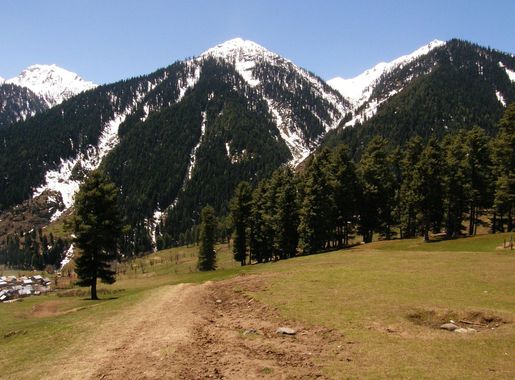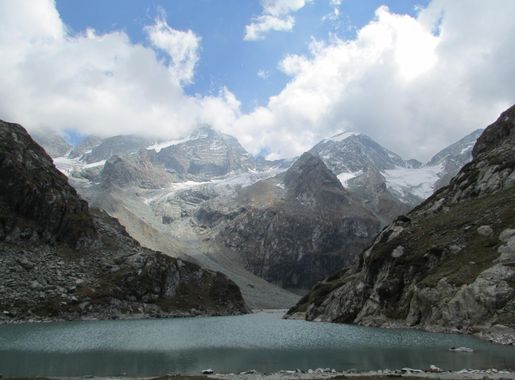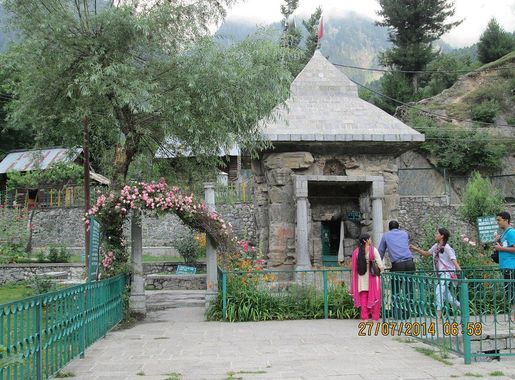
Pahalgam: The Jewel of Kashmir
Discover Pahalgam, the pristine paradise of Kashmir, where nature's beauty and cultural richness promise an unforgettable journey.
Nestled in the breathtaking Liddar Valley, Pahalgam is a serene retreat that captivates every visitor with its natural beauty. This charming town in the Indian state of Jammu and Kashmir is surrounded by lush green meadows, dense forests, and majestic snow-capped peaks, making it a perfect destination for nature lovers and adventure enthusiasts alike. Pahalgam offers a range of outdoor activities for tourists. You can enjoy a peaceful walk along the Liddar River, go for a thrilling trek to Kolahoi Glacier, or take a pony ride to the picturesque Baisaran Valley, often referred to as 'Mini Switzerland'. For those who love fishing, the river is abundant with trout, and fishing permits can be easily obtained. The town is also a starting point for the famous Amarnath Yatra, an annual pilgrimage that attracts thousands of devotees. The journey to the Amarnath Cave is both challenging and spiritually rewarding. Additionally, Pahalgam boasts several quaint markets where you can shop for traditional Kashmiri handicrafts, pashmina shawls, and local spices. No visit to Pahalgam is complete without experiencing its rich cultural heritage. The local cuisine, which includes dishes like Rogan Josh and Dum Aloo, is a gastronomic delight. The warm hospitality of the locals makes the experience even more memorable. With its stunning landscapes and tranquil ambiance, Pahalgam is truly a hidden gem waiting to be explored.
Local tips in Pahalgam
- Visit during the summer months (April to June) for the best weather and clear views.
- Carry warm clothing even in summer, as temperatures can drop in the evenings.
- Book accommodation in advance, especially if traveling during the Amarnath Yatra season.
- Hire a local guide for treks to ensure safety and to learn more about the area.
- Try the local cuisine at traditional Kashmiri restaurants for an authentic experience.
Pahalgam: The Jewel of Kashmir
Nestled in the breathtaking Liddar Valley, Pahalgam is a serene retreat that captivates every visitor with its natural beauty. This charming town in the Indian state of Jammu and Kashmir is surrounded by lush green meadows, dense forests, and majestic snow-capped peaks, making it a perfect destination for nature lovers and adventure enthusiasts alike. Pahalgam offers a range of outdoor activities for tourists. You can enjoy a peaceful walk along the Liddar River, go for a thrilling trek to Kolahoi Glacier, or take a pony ride to the picturesque Baisaran Valley, often referred to as 'Mini Switzerland'. For those who love fishing, the river is abundant with trout, and fishing permits can be easily obtained. The town is also a starting point for the famous Amarnath Yatra, an annual pilgrimage that attracts thousands of devotees. The journey to the Amarnath Cave is both challenging and spiritually rewarding. Additionally, Pahalgam boasts several quaint markets where you can shop for traditional Kashmiri handicrafts, pashmina shawls, and local spices. No visit to Pahalgam is complete without experiencing its rich cultural heritage. The local cuisine, which includes dishes like Rogan Josh and Dum Aloo, is a gastronomic delight. The warm hospitality of the locals makes the experience even more memorable. With its stunning landscapes and tranquil ambiance, Pahalgam is truly a hidden gem waiting to be explored.
When is the best time to go to Pahalgam?
Iconic landmarks you can’t miss
Wadiy e Hajan
Discover the serene beauty of Wadiy e Hajan in Pahalgam, a perfect escape for nature lovers and families seeking tranquility amidst majestic landscapes.
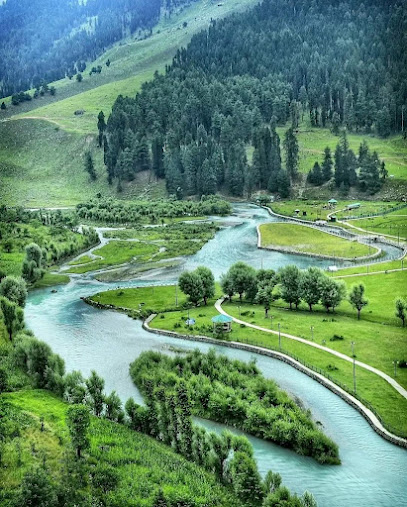
Overa Aru Wildlife Sanctuary
Explore the enchanting Overa Aru Wildlife Sanctuary, a pristine natural reserve in Jammu and Kashmir, teeming with diverse wildlife and breathtaking landscapes.
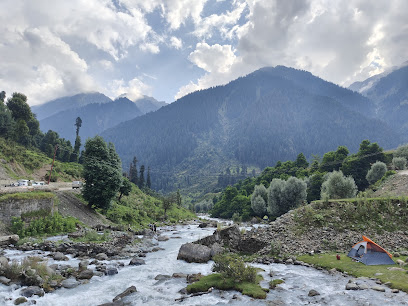
Pahalgam Retreat
Discover tranquility at Pahalgam Retreat, where lush valleys and majestic mountains create a serene escape for nature lovers and adventure seekers.
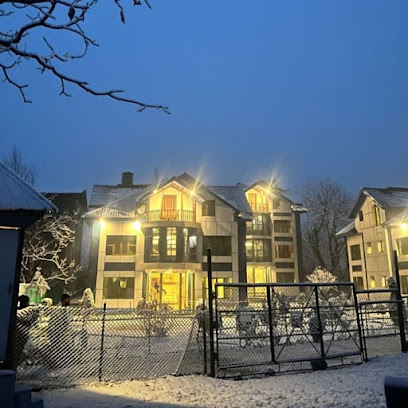
Welcomhotel By ITC Hotels, Pine N Peak, Pahalgam - Premium Resort Overlooking Lidder River And Snow Topped Mountains
Discover unparalleled luxury and breathtaking views at Welcomhotel By ITC Hotels, Pine N Peak in Pahalgam, Jammu and Kashmir.
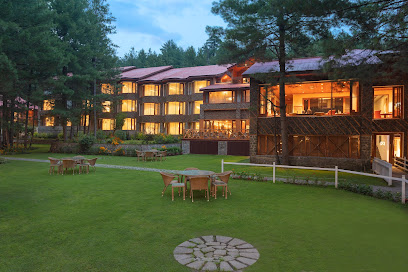
Park Umaro
Experience the serene beauty of Park Umaro, a stunning park in Pahalgam, Jammu and Kashmir, perfect for relaxation and outdoor activities.
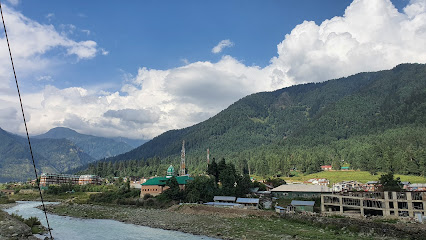
Mini Switzerland, Baisaran, Pahalgam
Discover the breathtaking beauty of Mini Switzerland in Baisaran, a picturesque escape in Pahalgam, perfect for nature lovers and adventure seekers.
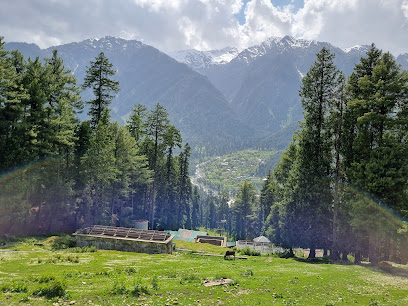
Moon View Resorts Pahalgam
Discover the picturesque beauty and adventure at Moon View Resorts Pahalgam, your perfect retreat in Jammu and Kashmir's stunning landscapes.
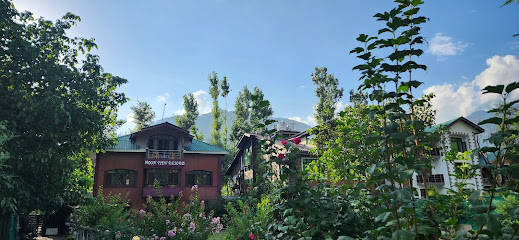
Pahalgam Club Garden
Explore the serene beauty of Pahalgam Club Garden, a breathtaking park nestled in the Himalayas, perfect for relaxation and family fun.
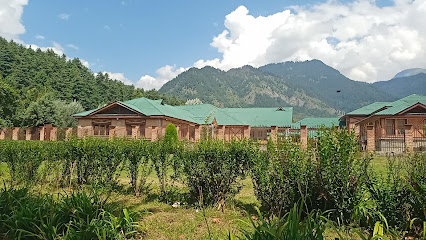
Hotel Tourist Palace pahalgam - 3 star hotel in Pahalgam
Experience the charm of Pahalgam at Hotel Tourist Palace, your cozy retreat surrounded by breathtaking landscapes and rich culture.
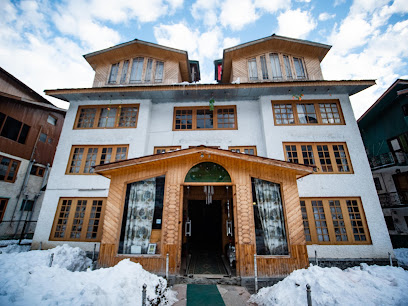
Pahalgam Tourism
Explore the enchanting beauty of Pahalgam, Jammu and Kashmir - a paradise for nature lovers and adventure enthusiasts.
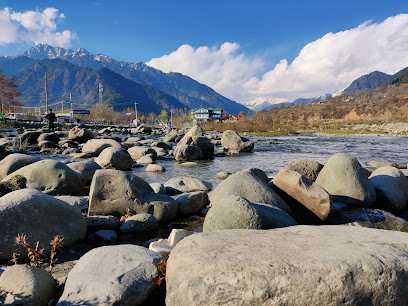
Wildflower Villa Resort, Pahalgam
Discover tranquility and adventure at Wildflower Villa Resort in Pahalgam, Jammu and Kashmir, a perfect getaway for nature lovers and thrill-seekers.

Lidder Amusement Park
Experience endless fun and adventure at Lidder Amusement Park, the ultimate destination for families and thrill-seekers in Pahalgam, Jammu and Kashmir.
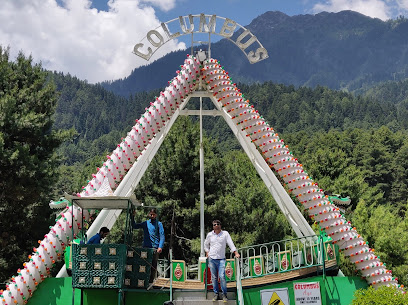
Betab Valley Chandanwari, Pahalgam J&K.
Experience the breathtaking beauty of Betab Valley, a serene escape in Pahalgam, where nature's splendor meets adventure in Jammu and Kashmir.
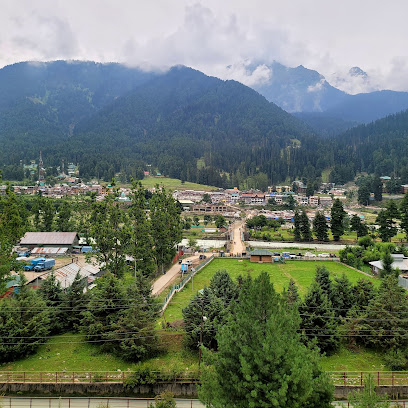
Kashmir House Pahalgam
Discover the serene beauty of Pahalgam with a stay at Kashmir House, where comfort meets nature's splendor in the heart of Jammu and Kashmir.
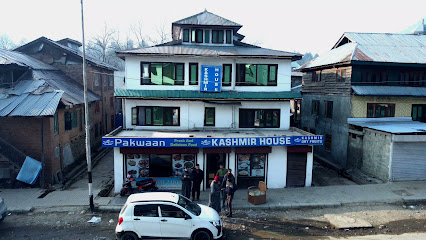
Woodswalk Treks and Tours
Discover the breathtaking landscapes of Jammu and Kashmir with Woodswalk Treks and Tours, your go-to adventure hub in Pahalgam.

Unmissable attractions to see
Wadiy e Hajan
Explore the serene beauty of Wadiy e Hajan, a stunning park in Pahalgam, Jammu and Kashmir, perfect for nature lovers and adventure seekers.
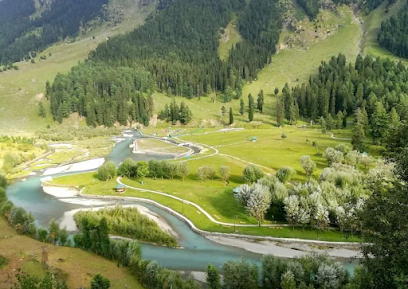
Baisaran Pahalgam
Discover the enchanting beauty of Baisaran Pahalgam, where lush meadows and majestic mountains create a serene escape in Jammu and Kashmir.
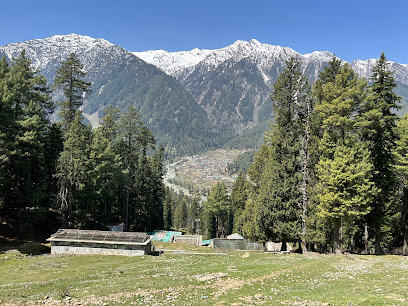
Dargah Hazratbal Shrine
Discover the tranquil beauty and spiritual significance of Dargah Hazratbal Shrine, a must-visit mosque on the shores of Dal Lake in Srinagar.
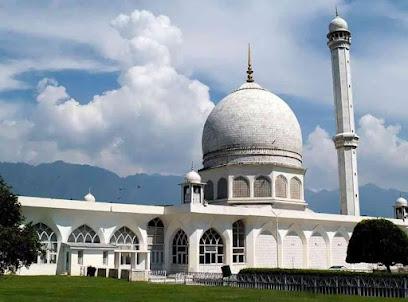
Park Umaro
Experience the natural beauty and tranquility of Park Umaro in Pahalgam, a perfect escape for nature lovers and families alike.
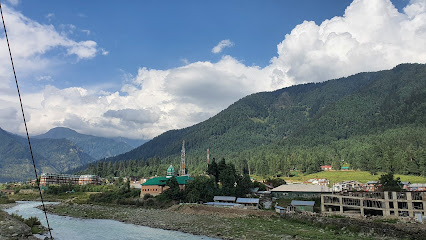
Mini Switzerland, Baisaran, Pahalgam
Discover the enchanting beauty of Mini Switzerland in Pahalgam, a serene retreat surrounded by stunning landscapes and adventure opportunities.
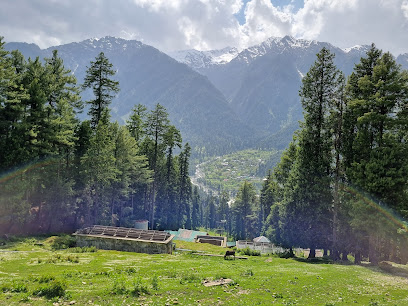
Pahalgam Club Garden
Explore the tranquility of Pahalgam Club Garden, a serene park in Jammu and Kashmir, perfect for relaxation and picturesque landscapes.
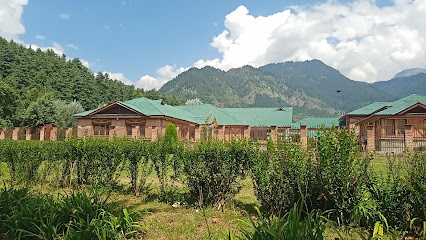
Lidder Amusement Park
Experience the thrill and joy of Lidder Amusement Park, a premier amusement park in Pahalgam, Jammu and Kashmir, where adventure meets breathtaking beauty.
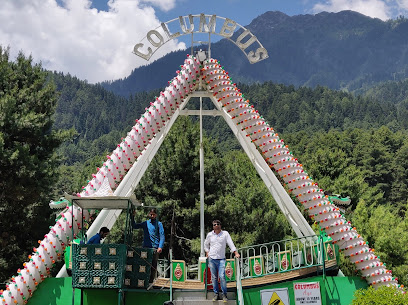
Betab Valley Chandanwari, Pahalgam J&K.
Explore Betab Valley in Pahalgam, a serene paradise of lush meadows, majestic mountains, and breathtaking landscapes in Jammu and Kashmir.
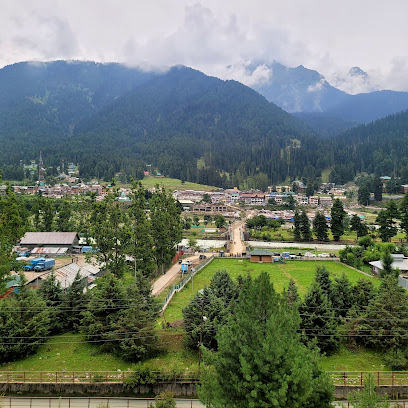
Poshwan Park
Experience the breathtaking tranquility of Poshwan Park in Pahalgam, a lush sanctuary perfect for relaxation and exploration amidst stunning Himalayan views.
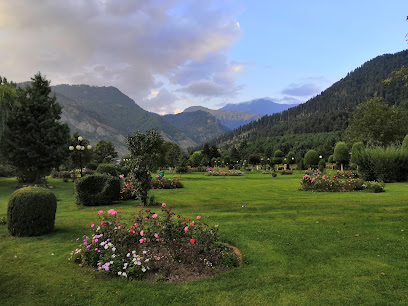
Chandanwari Snow Point
Experience the serene beauty of Chandanwari Snow Point, the gateway to the Amarnath Yatra amidst the enchanting winter landscapes of Jammu and Kashmir.
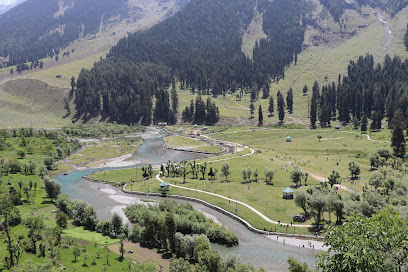
Love Pahalgam View point
Discover the breathtaking vistas at Love Pahalgam View Point, an unforgettable scenic escape in the heart of Pahalgam, India.
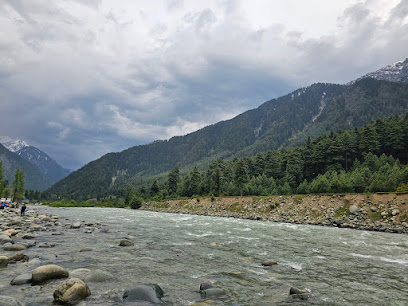
Chandanwari Skiing Point Pahalgam
Discover the breathtaking beauty and thrilling adventures of Chandanwari Skiing Point in Pahalgam, a must-visit destination for nature lovers and adventure seekers.
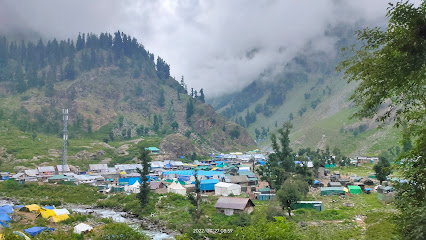
Lidder River Valley
Experience the breathtaking landscapes and serene beauty of Lidder River Valley in Pahalgam, a must-visit destination for nature lovers and adventure seekers.
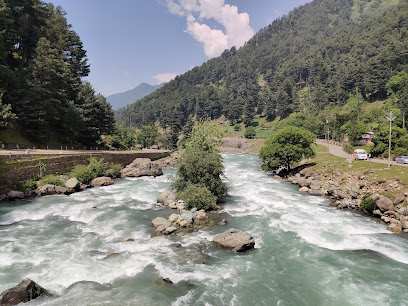
Baisaran Valley
Explore the breathtaking Baisaran Valley, a serene paradise in Jammu and Kashmir, known for its lush landscapes and adventure activities.
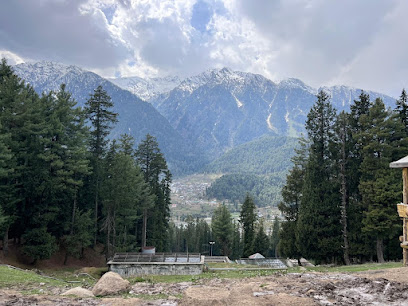
Tarsar Marsar
Explore the breathtaking landscapes of Tarsar Marsar, a premier hiking destination in Jammu and Kashmir, perfect for adventure and tranquility.
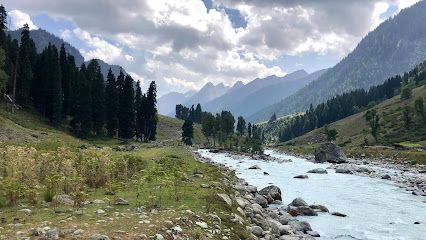
Essential places to dine
Hotel Tulyan
Discover tranquility at Hotel Tulyan – your perfect getaway in the heart of Pahalgam's breathtaking scenery.

Sagar Ratna Pahalgam
Discover delicious vegetarian cuisine at Sagar Ratna Pahalgam while enjoying breathtaking views of Jammu and Kashmir's natural beauty.
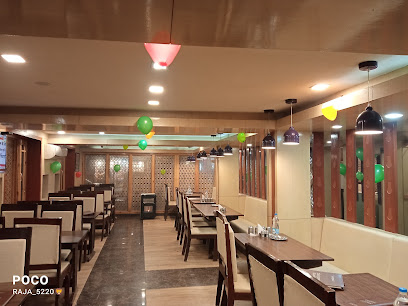
Sifar Pahalgam
Discover the flavors of Kashmir at Sifar Pahalgam, where tradition meets taste in a stunning mountain setting.

Cafe Wilo
Discover culinary excellence at Cafe Wilo in Pahalgam – where authentic Italian flavors meet breathtaking views.
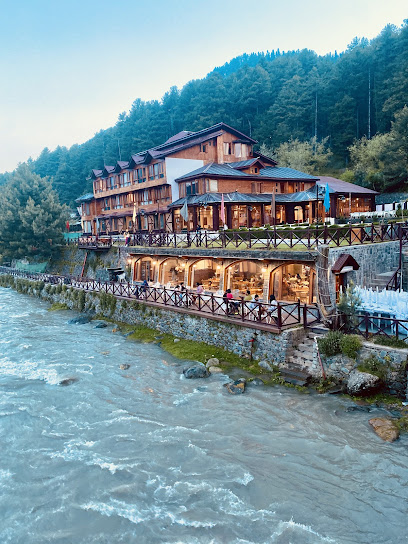
GASHI HOUSE AND MULTICUISINE RESTAURENT
Experience exquisite flavors at Gashi House and Multicuisine Restaurant in Pahalgam – where tradition meets modern culinary delights.
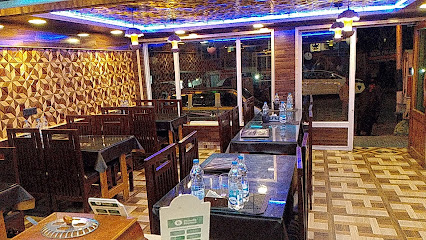
Nathu's Rasoi
Discover the essence of vegetarian cuisine at Nathu's Rasoi in Pahalgam - where flavor meets breathtaking Himalayan views.
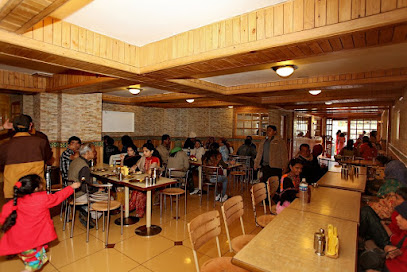
The capital grill pahalgam
Discover exquisite flavors at The Capital Grill Pahalgam amidst breathtaking landscapes and warm hospitality.
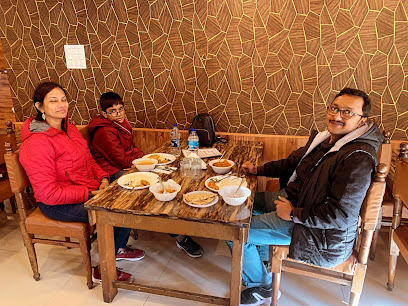
Pahalgam cafe and restaurant
Experience authentic Kashmiri cuisine at Pahalgam Cafe and Restaurant—your gateway to delightful non-vegetarian dishes amidst breathtaking scenery.
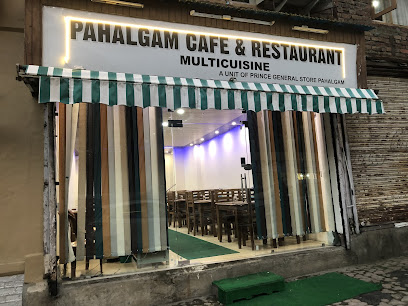
Manoj dhaba
Experience the essence of Indian cuisine at Manoj Dhaba in Pahalgam - where taste meets tradition amidst stunning landscapes.
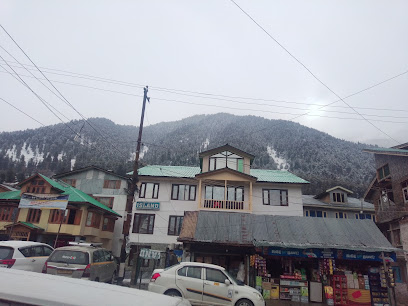
Bismillah Cool Point
Experience authentic Dhaba cuisine at Bismillah Cool Point in Pahalgam - where every meal is a taste of tradition amidst breathtaking landscapes.
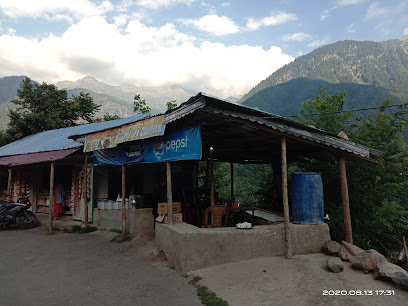
The O T R....
Experience authentic Kashmiri cuisine at The O T R in Pahalgam – where every meal tells a story.
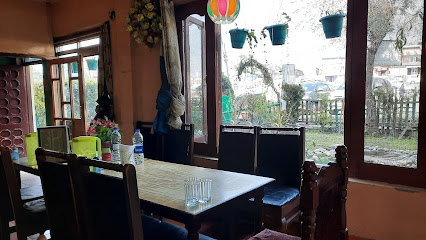
Poonam restaurant
Experience authentic Kashmiri cuisine at Poonam Restaurant, where local flavors meet stunning natural beauty in Pahalgam.
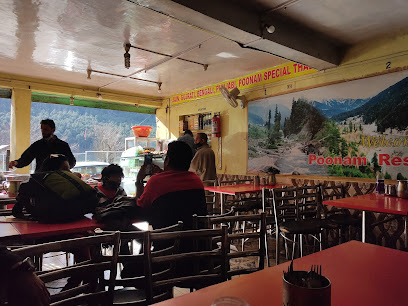
Bunty punjabi rasoi
Experience authentic Punjabi cuisine amidst the breathtaking landscapes of Pahalgam at Bunty Punjabi Rasoi.
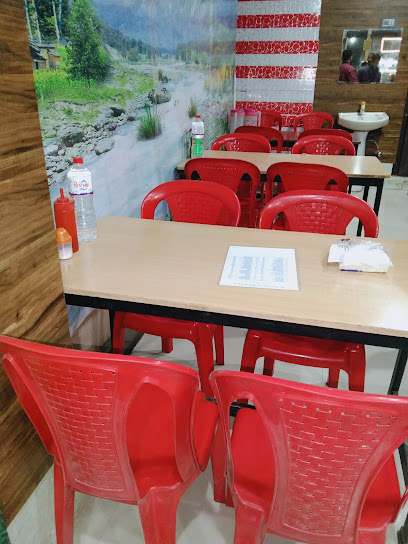
Sunrise Food Point Aru
Experience authentic Indian vegetarian cuisine amidst stunning landscapes at Sunrise Food Point Aru in Pahalgam.
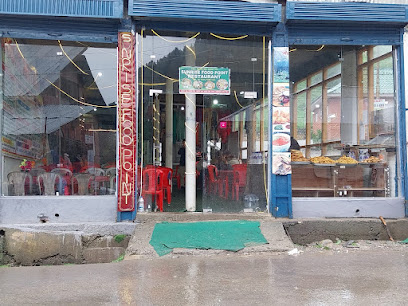
Food bowl Restaurant
Discover authentic Indian flavors at Food Bowl Restaurant in Pahalgam—where every meal is a journey through India's rich culinary heritage.
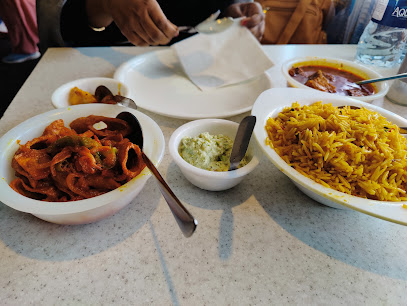
Markets, malls and hidden boutiques
MCP Shopping Complex
Discover the charm of MCP Shopping Complex, a vibrant shopping destination in Pahalgam, offering local crafts and delicious cuisine amidst stunning landscapes.
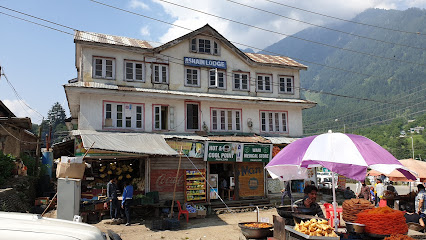
Kissan Dry Fruits Pahalgam
Discover the finest dried fruits and nuts at Kissan Dry Fruits in Pahalgam, where quality meets the rich flavors of Kashmir.
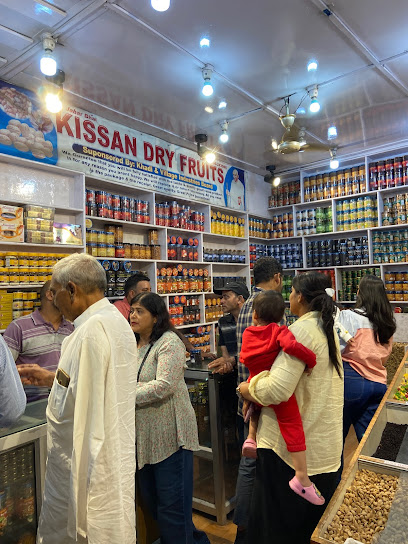
Hilton Arts Pahalgam Main Market Kashmir
Discover the charm of Kashmir's fashion at Hilton Arts Main Market, a vibrant shopping destination in Pahalgam offering unique clothing and accessories.

HAREEM FABRICS PAHALGAM
Discover the elegance of Hareem Fabrics in Pahalgam, where traditional craftsmanship meets modern fashion for an unforgettable shopping experience.
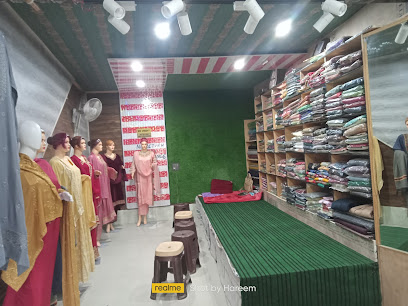
Zamandar Gabba factory pahalgam kashmir
Discover the exquisite craftsmanship of Kashmiri clothing at Zamandar Gabba in Pahalgam, a must-visit boutique for every traveler.
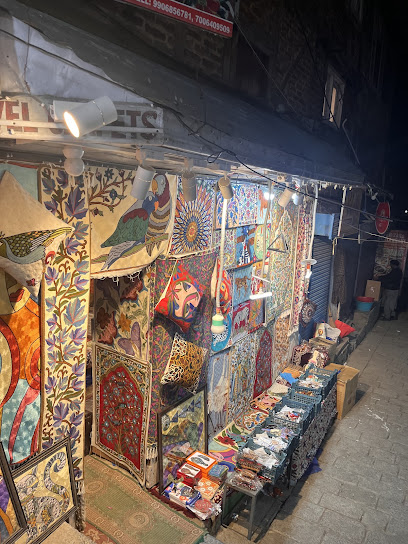
Smiling Gifts
Discover unique handicrafts, exquisite jewelry, and creative scrapbooking supplies at Smiling Gifts in Pahalgam, Jammu and Kashmir.

BOBBY GENERAL STORE
Explore Bobby General Store in Pahalgam for authentic Indian groceries, local snacks, and unique souvenirs that embody the spirit of Jammu and Kashmir.
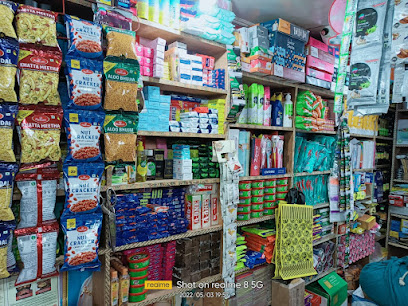
Pahalgam Heart
Explore the vibrant marketplace of Pahalgam Heart, where local culture, unique shopping, and delicious cuisine come together in the breathtaking Himalayas.
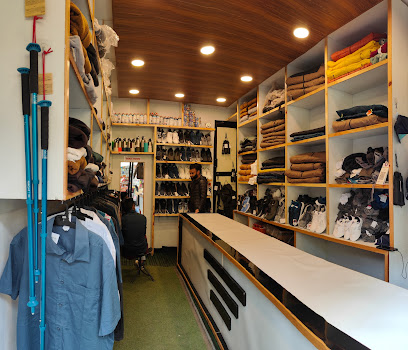
Brother's shawl House Pahalgam
Explore the exquisite craftsmanship of Kashmiri shawls at Brother's Shawl House in Pahalgam, a treasure for fashion enthusiasts and cultural explorers.
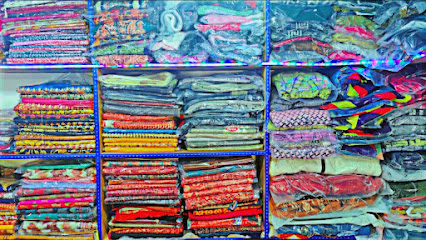
Bashir Cloth House
Discover the exquisite textiles of Jammu and Kashmir at Bashir Cloth House in Pahalgam, a treasure trove for clothing and bag enthusiasts.

Spirit and soul - Best Clothes Shop In Pahalgam
Discover unique fashion at Spirit and Soul, Pahalgam's top clothing store, blending tradition with contemporary style.
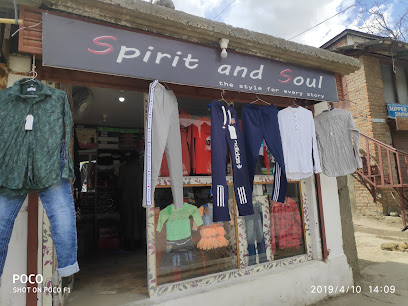
Goodluck general store
Discover the charm of Pahalgam at Goodluck General Store, your one-stop shop for local treasures and essential goods.
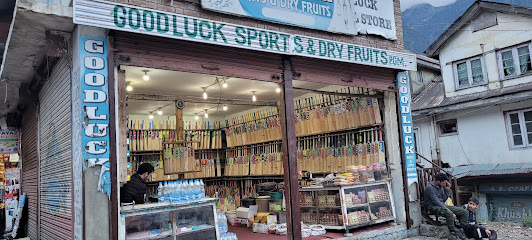
Wani handloom bhandar
Explore the exquisite craftsmanship of Wani Handloom Bhandar in Pahalgam, where tradition meets style in stunning Kashmiri textiles.
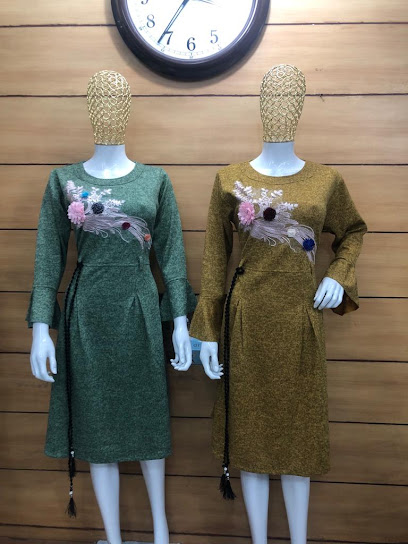
Akbar Handloom
Discover the beauty of authentic Kashmiri textiles at Akbar Handloom in Pahalgam, where craftsmanship meets culture.
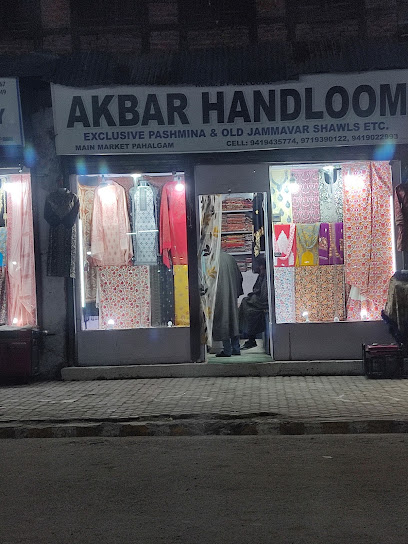
general store
Discover the essence of Pahalgam at the General Store, where local crafts and essentials meet the charm of Jammu and Kashmir.
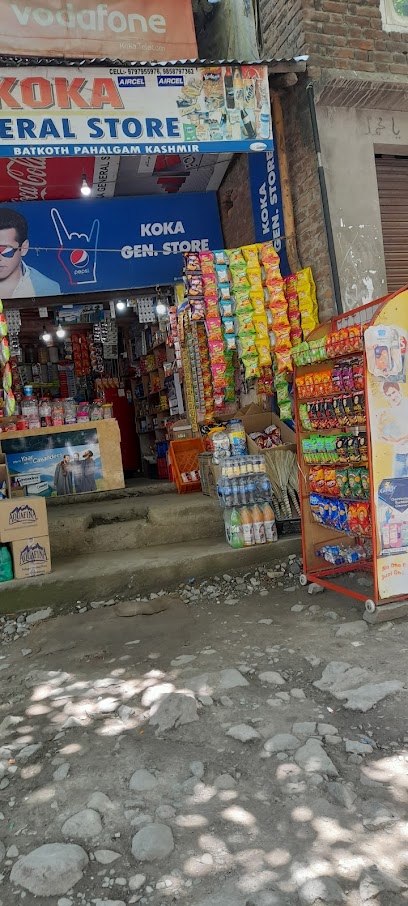
Essential bars & hidden hideouts
Sifar Pahalgam
Experience the taste of authentic Kashmiri cuisine at Sifar Pahalgam, where every meal is a celebration of local flavors and warm hospitality.
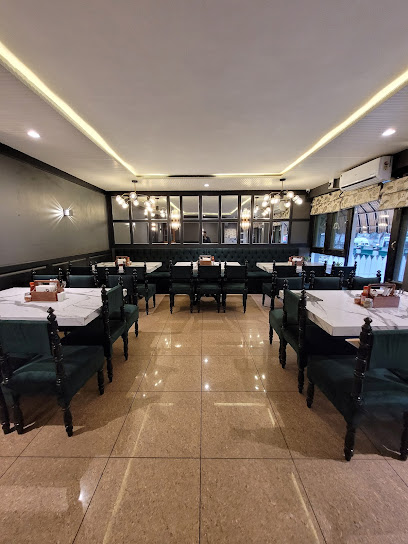
Café Log Inn
Discover the essence of Pahalgam at Café Log Inn, where nature meets comfort in a delightful café experience.
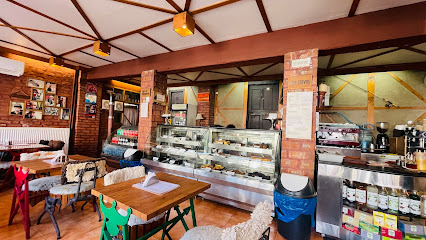
The Woods Cafe
Experience the charm of Pahalgam at The Woods Cafe, where delicious cuisine meets breathtaking views in a serene setting.

Cafe Wilo
Discover the exquisite flavors of Kashmiri cuisine at Café Wilo, your ideal dining destination in Pahalgam with stunning mountain views.
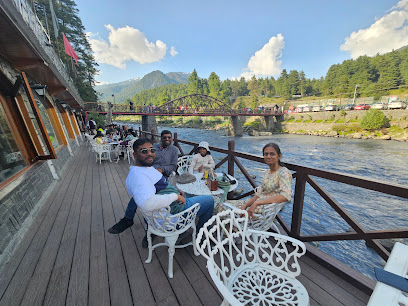
Meazban hotel And restaurant
Discover the essence of Asian cuisine at Meazban Hotel and Restaurant in Pahalgam, where every dish tells a story of flavor and tradition.
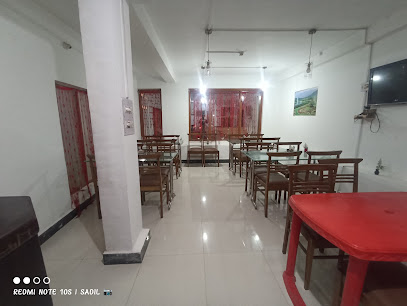
76°E Lounge cafe & Restaurant
Discover the flavors of Pahalgam at 76°E Lounge Cafe & Restaurant, where local cuisine meets breathtaking views in an unforgettable dining experience.
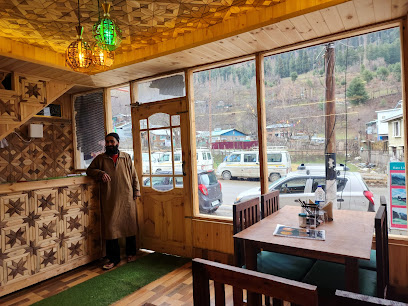
The capital grill pahalgam
Experience the best of Kashmiri and international cuisine at The Capital Grill Pahalgam, a culinary gem surrounded by breathtaking landscapes.
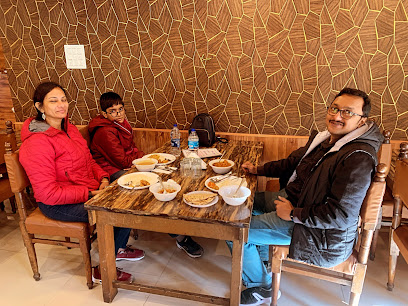
Lidder River
Experience the serene beauty of Lidder River in Pahalgam, a perfect blend of adventure and tranquility amidst nature's splendor.
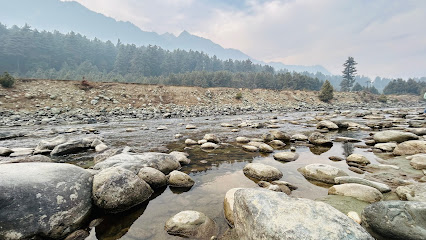
WelcomCafe Lolaab
Experience the rich flavors of Jammu and Kashmir at WelcomCafe Lolaab, where every meal is a celebration of culinary art in stunning Pahalgam.
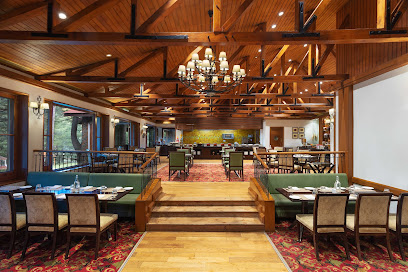
Royal Mugal Darbar
Experience the rich flavors of Mughal cuisine at Royal Mugal Darbar, a family-friendly restaurant in beautiful Pahalgam, Jammu and Kashmir.

Snow city restaurant
Discover the culinary delights of Snow City Restaurant in Pahalgam, where breathtaking views meet exquisite local and international flavors.

The O T R....
Experience the rich flavors of Kashmir at The O T R, a premier restaurant in Pahalgam's main market, serving traditional dishes in a welcoming atmosphere.
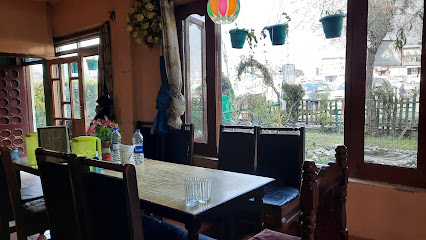
Food bowl Restaurant
Discover the authentic flavors of Indian cuisine at Food Bowl Restaurant, a must-visit dining destination in scenic Pahalgam, Jammu and Kashmir.
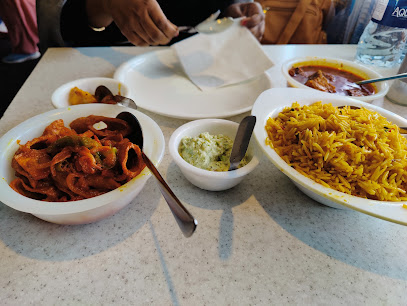
Swaad restaurant pahalgam
Experience the rich flavors of Indian cuisine at Swaad Restaurant in Pahalgam, where every dish is a celebration of local culinary traditions.
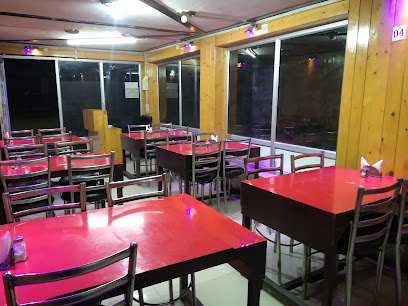
FRIENDS RESTAURANT PAHALGAM
Discover the flavors of Kashmir at Friends Restaurant Pahalgam, where exquisite dishes meet breathtaking views and warm hospitality.
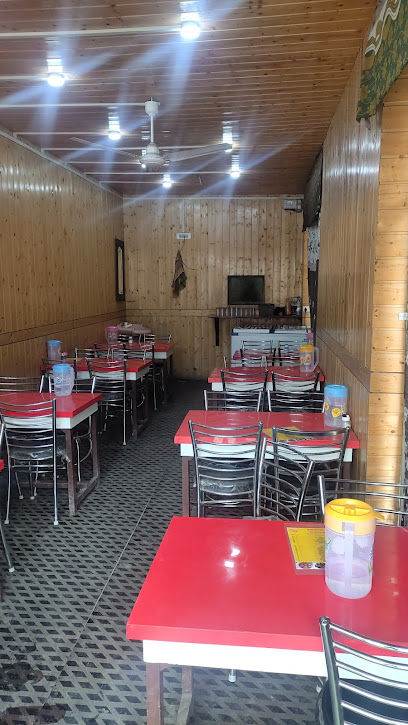
Local Phrases about Pahalgam
-
- Helloسلام
[salaam] - Goodbyeख़ुदा हाफ़िज़
[khuda hafiz] - Yesहां
[haan] - Noनहीं
[nahin] - Please/You're welcomeमेहरबानी कीजिए
[meharbani keejiye] - Thank youधन्यवाद
[dhanyavaad] - Excuse me/Sorryमाफ़ कीजिए
[maaf keejiye] - How are you?आप कैसे हैं?
[aap kaise hain?] - Fine. And you?ठीक हूँ। और आप?
[theek hoon. aur aap?] - Do you speak English?क्या आप अंग्रेज़ी बोलते हैं?
[kya aap angrezi bolte hain?] - I don't understandमुझे समझ नहीं आया
[mujhe samajh nahi aaya]
- Helloسلام
-
- I'd like to see the menu, pleaseकृपया मेनू दिखाएं
[krupaya menu dikhayen] - I don't eat meatमैं मांस नहीं खाता/खाती
[main maans nahi khata/khati] - Cheers!जय हो!
[jay ho!] - I would like to pay, pleaseकृपया मैं भुगतान करना चाहूँ
[krupaya main bhugtan karna chahoon]
- I'd like to see the menu, pleaseकृपया मेनू दिखाएं
-
- Help!मदद!
[madad!] - Go away!चले जाओ!
[chale jao!] - Call the Police!पुलिस को बुलाओ!
[police ko bulaao!] - Call a doctor!डॉक्टर को बुलाओ!
[doctor ko bulaao!] - I'm lostमैं खो गया/गई हूँ
[main kho gaya/gayi hoon] - I'm illमुझे बीमारी है
[mujhe bimari hai]
- Help!मदद!
-
- I'd like to buy...मैं ... खरीदना चाहूँ
[main ... khareedna chahoon] - I'm just lookingमैं बस देख रहा/रही हूँ
[main bas dekh raha/rahi hoon] - How much is it?यह कितने में है?
[yah kitne mein hai?] - That's too expensiveयह बहुत महंगा है
[yah bahut mahanga hai] - Can you lower the price?क्या आप कीमत कम कर सकते हैं?
[kya aap keemat kam kar sakte hain?]
- I'd like to buy...मैं ... खरीदना चाहूँ
-
- What time is it?समय क्या है?
[samay kya hai?] - It's one o'clockएक बजे हैं
[ek baje hain] - Half past (10)दस बजकर पंद्रह मिनट हैं
[das bajkar pandrah minut hain] - Morningसुबह
[subah] - Afternoonदोपहर
[dopahar] - Eveningशाम
[shaam] - Yesterdayकल
[kal] - Todayआज
[aaj] - Tomorrowकल
[kal] - 1एक
[ek] - 2दो
[do] - 3तीन
[teen] - 4चार
[chaar] - 5पाँच
[paanch] - 6छे
[chhe] - 7सात
[saat] - 8आठ
[aath] - 9नौ
[nau] - 10दस
[das]
- What time is it?समय क्या है?
-
- Where's a/the...?... कहाँ है?
[... kahan hai?] - What's the address?पता क्या है?
[pata kya hai?] - Can you show me (on the map)?क्या आप मुझे दिखा सकते हैं?
[kya aap mujhe dikha sakte hain?] - When's the next (bus)?अगली (बस) कब है?
[agli (bus) kab hai?] - A ticket (to ....)(.... के लिए) एक टिकट
[(.... ke liye) ek ticket]
- Where's a/the...?... कहाँ है?
History of Pahalgam
-
Pahalgam, nestled in the picturesque valley of Kashmir, has been a site of human habitation since ancient times. The region was influenced by the Aryans, who migrated to the Indian subcontinent. Their presence is evident in the local culture, language, and customs that have evolved over millennia. Pahalgam's lush landscapes and serene environment made it an attractive settlement for these early inhabitants.
-
During the reign of the Mauryan Emperor Ashoka in the 3rd century BCE, Buddhism spread across the Indian subcontinent, reaching the Kashmir Valley and Pahalgam. The region saw the construction of numerous Buddhist stupas and monasteries, which played a crucial role in the dissemination of Buddhist teachings. The remnants of these ancient structures can still be traced in the valley, reflecting the area's historical significance as a center for Buddhist learning and spirituality.
-
The medieval period marked a significant transformation in Pahalgam's history with the arrival of Islam in the 14th century. The region became part of the larger Kashmir Sultanate under the rule of Sultan Shams-ud-Din Shah Mir. Islamic culture and traditions began to permeate the valley, leading to the construction of mosques and the establishment of new social and cultural norms. This period also saw the rise of Sufism, with Pahalgam becoming a center for Sufi saints and scholars.
-
During the 16th and 17th centuries, Pahalgam experienced a period of prosperity under the Mughal Empire. The Mughal emperors, including Akbar and Jahangir, were captivated by the natural beauty of Kashmir and Pahalgam. They commissioned the construction of gardens, caravanserais, and other infrastructure to enhance the region's appeal. The Mughal influence is still evident in the architectural styles and horticultural traditions that continue to thrive in Pahalgam.
-
The colonial period brought new changes to Pahalgam as the British established their presence in Kashmir in the 19th century. The British were drawn to the region's cool climate and scenic beauty, making it a popular summer retreat. They introduced modern amenities and infrastructure, including roads and rest houses, to accommodate British officials and tourists. The colonial legacy is still visible in some of the old structures and the layout of the town.
-
Following India's independence in 1947, Pahalgam emerged as a prominent tourist destination. The government's efforts to promote tourism led to the development of hotels, resorts, and other facilities to cater to the growing number of visitors. Pahalgam became a base for trekking, fishing, and other outdoor activities, attracting nature lovers and adventure enthusiasts from around the world. The annual Amarnath Yatra, a significant Hindu pilgrimage, further boosted the town's prominence on the tourism map.
-
Pahalgam's cultural heritage is a rich tapestry woven from its diverse historical influences. The local population, comprising mainly of Kashmiri Pandits and Muslims, reflects a blend of ancient Aryan, Buddhist, Islamic, and Mughal traditions. The town's festivals, cuisine, and handicrafts showcase this unique cultural amalgamation. Traditional music and dance forms, such as Rouf and Hafiza, add vibrancy to the cultural landscape, making Pahalgam a living museum of Kashmir's historical and cultural evolution.
Pahalgam Essentials
-
Pahalgam is located in the Anantnag district of Jammu and Kashmir, India. The nearest airport is Srinagar International Airport, approximately 90 kilometers away. From Srinagar, you can hire a taxi or take a bus to Pahalgam. The journey by road typically takes around 2 to 3 hours. Alternatively, you can take a train to Jammu Tawi Railway Station, which is about 255 kilometers from Pahalgam, and then continue by road.
-
Pahalgam is a relatively small town, and many of its attractions are within walking distance. For longer trips, local taxis and auto-rickshaws are readily available. Shared taxis are a popular and economical option for traveling to nearby villages and tourist spots. Renting a car with a driver can also be a convenient option for exploring the area at your own pace.
-
The official currency in India is the Indian Rupee (INR). Credit and debit cards are accepted in most hotels, restaurants, and larger shops in Pahalgam. However, it is advisable to carry cash, especially in smaller establishments and for activities like local market shopping. ATMs are available in Pahalgam, but it is wise to withdraw sufficient cash beforehand to avoid any inconvenience.
-
Pahalgam is generally a safe destination for tourists. However, it is advisable to take standard precautions. Avoid walking alone at night in unfamiliar areas and keep an eye on your belongings in crowded places. While crime rates targeting tourists are low, it is always best to stay vigilant and aware of your surroundings.
-
In case of emergency, dial 112 for immediate assistance. There are local police stations and medical facilities available in Pahalgam. It is recommended to have travel insurance that covers medical emergencies. For minor health issues, pharmacies in the town offer over-the-counter medications. Additionally, it is useful to have the contact information of your country's embassy or consulate in India.
-
Fashion: Do dress modestly, especially when visiting religious sites. Avoid wearing revealing clothing. Religion: Do respect local customs and traditions. Always remove your shoes and cover your head when entering temples and shrines. Public Transport: Do be respectful and give up your seat to elderly passengers. Don’t eat or drink on public transport. Greetings: Do greet people with a polite 'Namaste' or a handshake. Eating & Drinking: Do try local delicacies and accept food offerings graciously. Don’t refuse hospitality, as it is considered impolite.
-
To experience Pahalgam like a local, visit the local markets where you can buy fresh produce and traditional Kashmiri goods. Engage with locals, as they are often friendly and willing to share stories about the town's history and culture. Don’t miss visiting Betaab Valley, Aru Valley, and Baisaran for breathtaking views. For a unique experience, take a pony ride to explore the scenic meadows and hills around Pahalgam.
Trending Landmarks in Pahalgam
-
Wadiy e Hajan
-
Overa Aru Wildlife Sanctuary
-
Pahalgam Retreat
-
Welcomhotel By ITC Hotels, Pine N Peak, Pahalgam - Premium Resort Overlooking Lidder River And Snow Topped Mountains
-
Park Umaro
-
Mini Switzerland, Baisaran, Pahalgam
-
Moon View Resorts Pahalgam
-
Pahalgam Club Garden
-
Hotel Tourist Palace pahalgam - 3 star hotel in Pahalgam
-
Pahalgam Tourism
-
Wildflower Villa Resort, Pahalgam
-
Lidder Amusement Park
-
Betab Valley Chandanwari, Pahalgam J&K.
-
Kashmir House Pahalgam
-
Woodswalk Treks and Tours
Nearby Cities to Pahalgam
-
Things To Do in Jammu
-
Things To Do in Murree
-
Things To Do in Naran
-
Things To Do in Sialkot
-
Things To Do in Kaghan
-
Things To Do in Abbottabad
-
Things To Do in Leh
-
Things To Do in Islamabad
-
Things To Do in Rawalpindi
-
Things To Do in Gujranwala
-
Things To Do in Gilgit
-
Things To Do in Manali
-
Things To Do in Amritsar
-
Things To Do in Lahore
-
Things To Do in Swat


